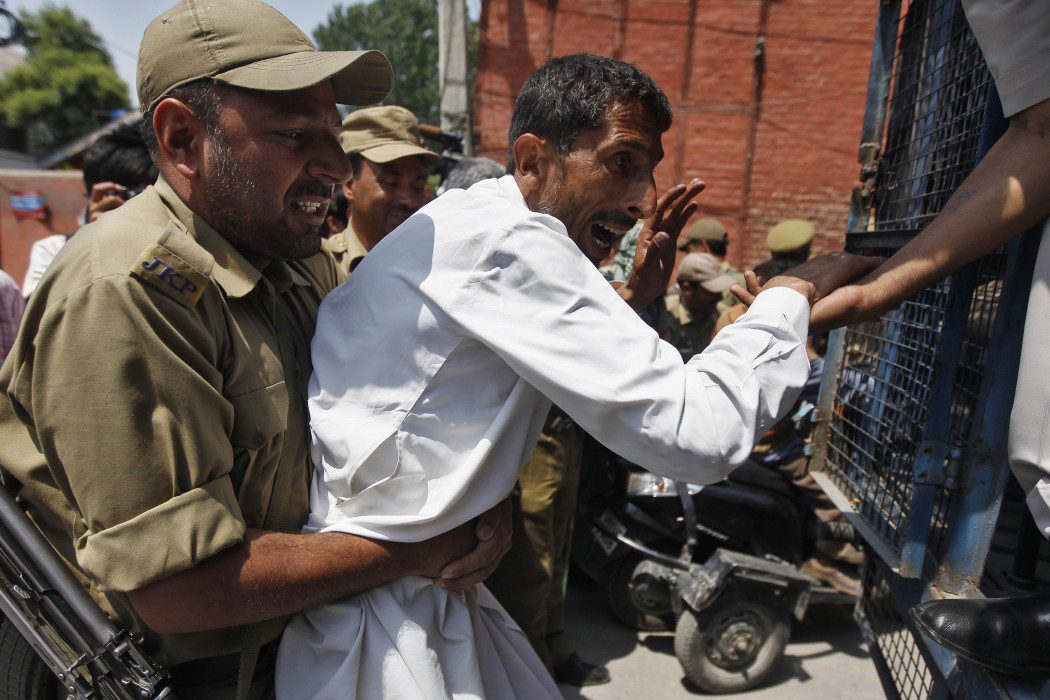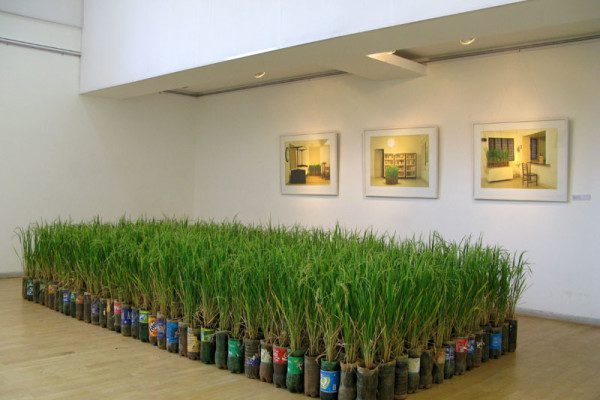One out of every six people in Kashmir is a victim of violence at the hands of the Indian Armed forces. Samreen Mushtaq talks to one such victim and brings to us the harrowing story of his torture …
“I don’t like enjoyment. Where one lakh people have been killed, what peace will Tulip Garden or Gulmarg give you? Can one just live in a palace and enjoy when so much blood has been spilled?” he asked me. I met him in a bakery shop at Khwajabagh, some four kilometres from the main town of Baramulla in North Kashmir. I got to know from the shopkeeper that he’d also been a victim of torture, one among thousands in the valley. I started asking him questions, and by the time he finished narrating the events from his tortured past, over an hour had passed. Yes, all this conversation was taking place inside a shop, but I had to listen. And listen I did.
He was affiliated to Muslim Janbaz Force once the armed conflict erupted in the valley. On 12 December 1991, aged 21, he was picked by the Border Security Force in Littar, Pulwama. At that time, he was working on an ad-hoc basis in the health department, earning 525 rupees per month. “I was taken to the BSF I46 Battalion camp there and tortured non-stop for six days. From being beaten with rods to being given electric shocks even in my private parts, the kind of torture I suffered was quite common among those who were picked up. They’d even call the ‘source’ in and ask him to beat me. He broke my nose and I had to be hospitalised”. He remembers every detail vividly: “Even if I am mumbling incoherently in my sleep, I am sure I’d narrate the events exactly as they happened. How can I ever forget it?”
He doesn’t falter even once as he tells me the dates when each event happened. From 14 February to 12 April 1992, he was kept in the infamous Papa II (one of the most dreaded torture centres located in Srinagar that was shut down in 1996 before being used by the Border Security Force for interrogating people) and then shifted to Gogoland (another infamous interrogation centre in Srinagar) and kept there until 13 October, 1992. He was also slapped with the Public Safety Act amidst all this. “In Papa II, the torture continued. In addition to everything that was done to me earlier, they’d also pull hair from each part of my body. In Gogoland, it was more humiliation than direct torture. They’d blindfold you, make you walk a kilometre in line with the others, your hands on the shoulder of the one in front of you and then tell you to use of bathroom facilities. It was terrible.”
Meanwhile, the shopkeeper gets us tea and someone else known to both of them steps in, and asks this man what’s going on, to which he replies with a smile,”just narrating a tale” and then he turns to me, a distant look in his eyes, the smile no longer there and says, “What else shall I tell you, my daughter, of the kind of torture meted out to me? But I am sure you do understand it even when I am not saying everything.”
There is a long pause. Perhaps, neither of us knows what to say. Just to make it less awkward, I ask if he was released after that. “Oh yes, in 1994. But that ‘freedom’ didn’t last long. I was no longer involved in anything, but I was still picked up from my home in Khwajabagh during the month of Ramadhan on 19 February, 1995 by 15 Punjab battalion of the Army and taken to their Ushkura headquarters, on charges of possessing weapons – a charge that was never proved, neither was the case ever quashed. I was kept there only for a day but it was the worst form of torture. Third degree.”
Another long pause. A sigh.
This time I don’t need to find words to break the awkward silence. He speaks. “Did I tell you I was asked to drink alcohol there?”, he asks. It isn’t really a question because he doesn’t wait for me to respond before he continues, “I refused, not because I was fasting but even otherwise I wouldn’t have taken it. What followed was that I was hanged upside down, fed alcohol from my back passage. And I remember how it came out through my nose. I was kept naked; hot iron rods were rolled over my thighs; chili was sprinkled on the wounds, among other things. By evening, I was in no position to stand on my legs.”
Public resentment was visible outside the camp. People had assembled there and were demanding his release, he tells me. “I was released but not before one Army Major, Shekhawat laid down three conditions in front of me – that I’d stay away from the Press, that I would go for treatment anywhere except Kashmir and they would pay, and that once I recovered and people came to see me, I shouldn’t mention their names at any cost; they who’d almost tortured me to death. He added that the moment I stepped out of this boundary of conditions he’d set, I’d be killed.”
He was hospitalised for four months; his kidneys were damaged and he’d to go for dialysis. On 3 July, 1995, he was regularised in service but this period of calm was short-lived. He was picked again in Soura area of Srinagar on 21 July by BSF 12 Battalion on charges of having links with a local militant and kept in Karan Nagar for 12 days. “During the time I was detained, a blast happened in Soura and some children were injured. After a couple of days, the BSF paraded me through that area, calling on the women whose children were injured, asking them to spit on me for I was the one behind the blast. Then they took me to a deserted house in Vicharnag Nowshera and started beating me ruthlessly. The same women who they’d asked to spit on me were crying for me and asking them to let me go.” After being taken to Papa II, a screening committee set up by the government declared him, along with 110 other men, as innocent and he was released on 26th January 1996.
However, the troubles didn’t end there. He was supposed to report to one camp or the other every Sunday and it was humiliating, especially when he’d be ordered to clean the camp or do other such tasks. In 2010, he was jailed for 18 days on charges of inciting the youth to indulge in stone-pelting. Did he ever think of adopting the legal route to complain against all this, I ask. “What could I have done? Didn’t I tell you how that Major threatened me? Also, I am serving in a government department; it’s difficult. I don’t want any compensation. But trust me, if there’s ever a mass involvement, I won’t care about the job.”
Did he face problems from the society, while he was jailed and tortured on and off? “I did face humiliation in the society as well. Despite being involved at that time in a movement that almost everyone was a part of, I witnessed how my sister couldn’t find a match because people would say she is a militant’s sister. Even now, after facing so much torture, people question every little belonging I have. I earn 40,000 today, yet if people see me wearing a chappal or a pheran, they’d say “Iske paas do number ka paisa hai”, even if they themselves wear branded suits and shoes. Heard that couplet, ‘Hum aah bhi karte hain tou hojaate hain badnaam / Wo qatl bhi karte hain tou charcha nahin hota’? That’s exactly the case here.”
He is married with three children, and they have become his world. There is a sparkle in his eyes as he talks about them, a smile on his lips that reaches his eyes. So what else does he want now? “I wish I could get my passport. I don’t need it for any enjoyment, but I dream of going for Umrah and then Hajj; that’s the only thing I need. But they won’t issue my clearance. If I am an Indian in their eyes, why don’t they treat me as such? And if I am not, why don’t they simply declare it?”
Wondering who he is? Look around in Kashmir, you’ll find him; perhaps limping, perhaps walking with drooped shoulders, or standing too stiff, perhaps a finger chopped off, and nails pulled out. He could be your family member, your neighbour, someone’s son, someone’s brother, someone’s husband. Or he could even be you. Torture has faces in Kashmir, in thousands.
Reminds me of Agha Shahid Ali’s words: “…a doctor- who had just treated a sixteen-year-old boy released from an interrogation centre- said: I want to ask the fortune-tellers: Did anything in his line of Fate reveal that the webs of his hands would be cut with a knife?” (“Dear Shahid”, The Veiled Suite, page 194)
_______________________________________________________________________________________________________________
Note: Ever since the armed conflict erupted in the valley in 1989, torture has been used systematically by Indian forces as a weapon of war in Kashmir. Rights groups have claimed that one out of every six people living in Kashmir has been a victim of torture. In 2010, WikiLeaks cables revealed that US officials had been briefed in 2005 by the International Committee of the Red Cross about the widespread use of torture against civilians by the Indian forces in Kashmir. It was reported that out of 1,296 detainees that they got a chance to interview, 681 had been subjected to one or more of six forms of torture that included electric shocks, legs being crushed or excessively stretched, suspension from ceiling, water boarding and sexual assault. ‘Alleged Perpetrators’, a report released in 2012 by the International Peoples Tribunal for Human Rights and Justice in Indian administered Kashmir and Association of Parents of Disappeared Persons highlighted how crimes committed and impunity provided to the perpetrators indicated that it was a part of the policy of the Indian state and its functionaries in Kashmir. Today, torture centres like Papa II and Hari Niwas have been converted into official residences by certain politicians, perhaps to show all is well in Kashmir. But where you see seven lakh security forces having converted the valley into a garrison; where you are greeted by the sight of an Indian soldier pointing a gun at you after every couple of steps; where you walk with the dread that you might be picked up, subjected to enforced disappearance and never return; where you know you could be killed without a reason, why do you need torture centres?


